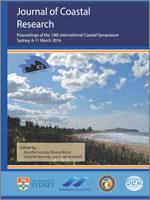Jeanson, M.; Dolique, F.; Sedrati, M.; Cohen, O.; Bertier, J.; Cavalin, A.; Charpentier, J, and Anthony E.J., 2016. Wave modification across a coral reef: Cap Chevalier, Martinique Island. In: Vila-Concejo, A.; Bruce, E.; Kennedy, D.M., and McCarroll, R.J. (eds.), Proceedings of the 14th International Coastal Symposium (Sydney, Australia). Journal of Coastal Research, Special Issue, No. 75, pp. 582–586. Coconut Creek (Florida), ISSN 0749-0208.
Waves exert a major influence on hydrodynamic processes and on sediment transport over shallow submerged coral reefs, as well as on reef-bound beaches. This study describes results from a field experiment conducted at Cape Chevalier in the southeast of Martinique Island (Lesser Antilles, French West Indies), and investigates spatial and temporal variations in wave characteristics across a microtidal coral reef and lagoon. Measurements of wave pressure fluctuations were obtained using three pressure sensors deployed across the reef from 28 to 30 November, 2011. Analysis of the measured data shows that wave characteristics were strongly influenced by water depth and reef geometry. Calculations of energy dissipation indicate an average energy reduction of 91.5% between the fore-reef and back-reef (86% at high tide and 98% at low tide). The mean energy reduction between the fore-reef and the beach was 95.5% (92% and 99% respectively at high and low tide). The incident waves measured at the fore-reef during the experiment were predominantly trade wind-generated with peak periods between 7 and 10 s. Depending on tidal elevation and water depth, back-reef waves were characterized by an energy distribution dominated by the peak 7–10 s gravity waves at high tide and by infragravity frequencies (>20 s) at low tide. Wave energy at the beach was dominated by infragravity frequencies during both high tide and low tide. Wave spectral analysis indicates, thus, significant filtering of peak period energy as waves traveled across the reef.





